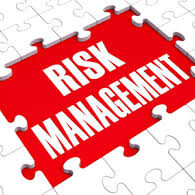Risks are inevitable. Therefore, we all have to deal with them. The key to dealing with risks is how you handle them. Identifying, assessing and determining the appropriate response to the risks that arise are key risk management skills to possess as a project manager. A risk, if negative, is a potential problem. As a project manager, your job is to ensure it doesn’t become an actual problem. Therefore, incorporating effective risk management into your projects is essential and can make a tremendous positive difference. This will enable you to identify, assess and mitigate risks accordingly. If planned properly, you can build enough flexibility into your project plan and budget so that the risks are manageable when they occur.
To properly incorporate risk management, a core document should be created to define how risk management should be performed. The key components of this document, a risk management plan, will outline risk analysis steps and mitigation planning.
The Risk Management Process involves five key steps:
- Risk Identification – Identify the risks in the project and document in a risk register.
- Risk Evaluation – Analyze, assess the impact and prioritize the risks.
- Risk Response – Determine Mitigation responses for each risk:
- Mitigation
- Transfer
- Acceptance
- Avoidance
- Risk Monitoring – Monitor risks and response plans and continue to identify any new risks throughout the project. Update risks documented in the risk register or add new risks to the register.
- Communicate – Keep your stakeholders and project team informed about the projects risks.
Risk Management is an important constraint of any project. If risks, are not managed properly, your project is at risk of schedule delays and increased costs. The benefits of risk management are great. Implement a robust risk management plan which will enable you to deliver your project on time, on budget and within quality.

